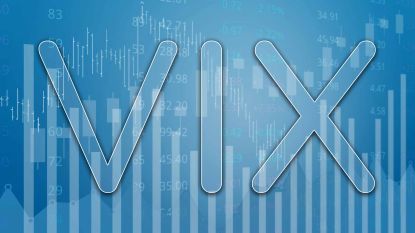The Cboe Volatility Index – frequently referred to by its ticker symbol, VIX – is a real-time measure of implied volatility on the benchmark S&P 500 Index (SPX). Not only is the VIX used as a quick gauge of short-term investor sentiment, it’s also the basis of many active investing strategies, from portfolio hedging to directional speculation.
First introduced by the Chicago Board Options Exchange (Cboe) in 1993, the initial version of the VIX reflected a rolling 30-day calculation of at-the-money implied volatility (IV) on S&P 100 Index (OEX) options. This calculation is no longer widely used or tracked, but the “old VIX” is still available under the ticker symbol VXO.
The current version of VIX, which has been in popular use since 2003, offers a more comprehensive look at options IV by considering a range of near-the-money call and put strikes on the broader S&P 500. Specifically, intraday VIX quotes are calculated from a basket of short-term SPX options that are weighted to maintain a constant average maturity of 30 days.
Subscribe to Kiplinger’s Personal Finance Be a smarter, better informed investor.
Save up to 74%
Sign up for Kiplinger’s Free E-Newsletters Profit and prosper with the best of expert advice on investing, taxes, retirement, personal finance and more – straight to your e-mail.
Profit and prosper with the best of expert advice – straight to your e-mail.
What does the VIX tell us?Generally speaking, implied volatility is expected to rise during times of heightened fear or uncertainty regarding the short-term direction of the market, whereas lower IV is correlated with investor complacency and positive price action for equities.
Since VIX is a fairly straightforward measure of IV on one of the most widely tracked U.S. equity benchmarks, a relatively higher VIX is said to indicate elevated fear among investors, while a relatively lower VIX suggests greater calm among market participants. As such, many analysts and market watchers track the VIX as a contemporaneous indicator of investor sentiment, and it’s often referred to casually as the “fear index” or “fear gauge.”
How can I trade the VIX?The real-time VIX values quoted in the financial media (aka the “spot VIX” or “cash VIX”) should be regarded as statistics – and in light of this, VIX has no publicly listed shares and cannot be traded directly in the same way as a company’s stock. That said, there are plenty of VIX derivatives and exchange-traded products available for those looking to add long or short volatility exposure to their portfolios.
Given the differing factors driving the day-to-day action in each index, VIX and SPX are generally expected to maintain an inverse correlation with one another. This historical relationship, alongside the well-publicized VIX highs that accompanied stock market crashes in 2008 and 2020, has driven investor interest in long VIX exposure as a “hedge” of sorts to offset a portfolio that’s top-heavy on large-cap equities.
Cboe lists options contracts that derive their value from short-term VIX futures, and call options on VIX can be used to hedge equity portfolios in the expectation that VIX and stocks will continue to diverge over time. VIX calls and puts can also be used to bet on directional moves in the index itself, though traders should be aware of the unique expiry and settlement rules pertaining to VIX options.
In addition to VIX options, various VIX-based exchange-traded products (ETPs) exist that track the price action of the index itself and/or some combination of its futures – whether directly, inversely or in a leveraged manner. Some of the more popular and active of these include the iPath Series B S&P 500 VIX Short Term Futures ETN (VXX), the ProShares Ultra VIX Short-Term Futures ETF (UVXY), and the Short VIX Short-Term Futures ETF (SVXY).
That said, many VIX-based products may be suboptimal for the goals of casual investors due to structural concerns with the roll of underlying futures contracts, increased risk associated with leveraged and inverse ETPs, and more. As with any investing vehicles, traders should carefully consider the stated goals, suggested holding periods and liquidity of these instruments.
Related contentMaking the Case for Covered Call StrategiesBull Markets vs Bear Markets: The Differences ExplainedThe Investment Strategy You Need Now
